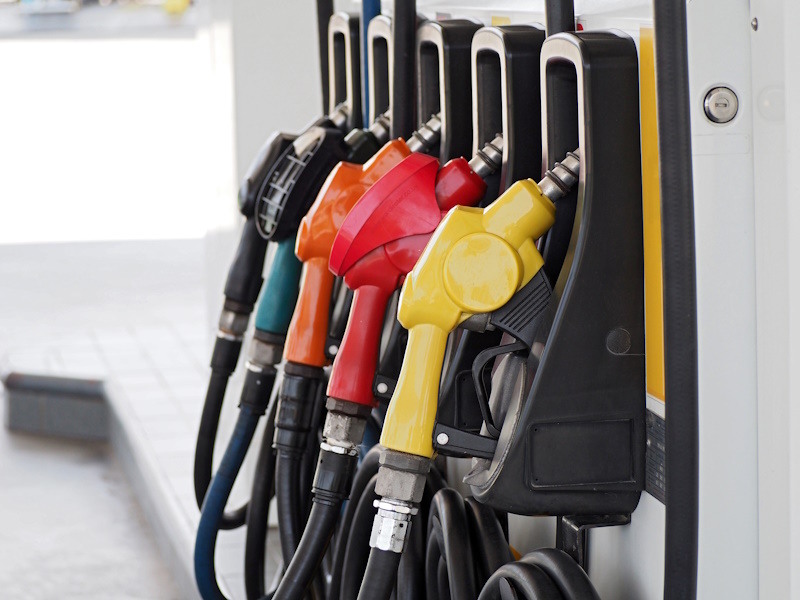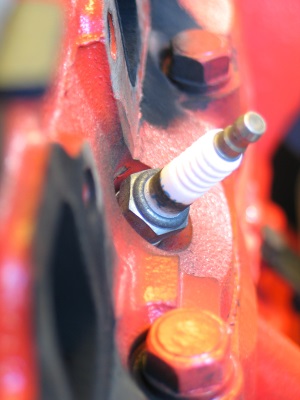The best time to buy auto tires and other parts you need
It’s great to know how to fix your own car. You can save big bucks vs. going to the mechanic’s shop and you know the quality of the work being done....

Just as hurricane season starts June 1st and boating season starts on Memorial Day, summer driving season kicks off around the end of May. It’s the time of year that invariably sees a couple of things, without fail – more people on the road and higher gas prices. The two are linked together because more cars driving means higher demand which drives gas prices higher.
That doesn’t mean gas prices go up by the same amount every season, though. And there are other factors that influences gasoline price swings in either direction.
So what are the people who have their ears to the ground saying about the things that influence what we might see at the pump in Summer 2017?
It seems to be the same song each year. “More people will be out driving this summer than ever before!” It’s the same each year because it keeps being true.
This year, several factors are coming together to continue this trend. Auto sales continue to be strong, projecting to top 17 million units in 2017. SUV and light truck sales are also coming off two years of consecutive record sales, in 2015 and 2016. Both of these point to record gasoline usage because more vehicles are out on the road.
Indeed, not only are there more cars out than ever before in history, the economy has rebounded to the point where people are able to take summer trips they may not have been able to afford before. The unemployment rate is the lowest it’s been since before the 2008 recession. That’s a big deal. And when the economy rebounds, people drive more. The rolling 12-month total of miles driven by U.S. drivers has risen to set a new record in every single month since December 2014. That’s a lot of records (29 consecutive records, in fact), and that’s a lot of gas being burned.
The bottom line here is, you guessed it, more drivers out on the road this summer driving season means the possibility for higher gas prices.
The other half of the equation driving gas prices is the supply side. Number of cars is demand, amount of gas available is supply. Supply and demand.
Oil prices are nowhere near where they were during the height of the Iraq War, but they’re still higher than they were last year. When oil prices were at their bottom, many oil companies had to abandon expensive exploration and production projects – the kind of projects critical to the discovery of new supplies of petroleum.
Now that oil prices have risen a little bit, we can expect many of these projects to be restarted. Analysts even foresee a doubling of the number of new oil projects in 2017. And this will mean even greater amounts of oil and gasoline available in the coming years.
The average person pays no attention to minutae like oil rig numbers and petroleum inventory. But those things have a definite impact on oil supplies and gas prices.
Back in March, the U.S. saw a build-up in oil inventory that really started to depress oil prices. Barrel prices even dropped below $50. The inventory excess has ebbed and flowed in the months following, with oil prices ebbing and flowing along with it. The month of March 2017 ended with the U.S. having over 500 million barrels (21 billion gallons) of oil sitting in inventory, waiting to be used.
Not only that, but the first quarter of 2017 also saw a record number of oil rigs (more than 600) active across the country, all pumping oil to add to the supply.
All of this means that there should be plenty of oil available to help gasoline supplies keep up with the record demand we talked about earlier.
More drivers, oil rigs, OPEC, shale, R&D, blah blah blah. What we want to know is, are we going to have to pay more for gas this summer? If so, how much more?
As a rule, gas prices always rise in the spring as refineries spend time switching their production from higher-volatility winter gas to low-vapor summer gas. But this price increase levels off by the end of spring. What is the summer itself going to look like for the American driver?
The U.S. Energy Information Administration publishes price outlooks, several times a year, for the coming months. Their outlook at the start of May? Gas prices about 25 cents per gallon higher this summer than last.
The average gasoline price in summer 2016 was about $2.23. This was a nationwide average; obviously some areas of the country like California and Hawaii were higher than that.
This year, the EIA projects a nationwide average of $2.46. Prices on the West Coast project to be around $2.80, and prices on the Gulf Coast (closest to the actual production areas) project to average around $2.25.
Even though we may be paying a quarter more per gallon than last year, it’s a far cry from summers in the recent past. The summer averages between 2011-2014 were always over $3.50 per gallon. In 2009-2010, we were paying around $2.75 for summer gas. And don’t even think about the recession of 2008, when gas prices across the country averaged over $4.00 a gallon. Given all that, we'll gladly take $2.46 per gallon.
Since the majority of people are planning to take some kind of trip this summer, we’ll finish with a review of a couple of important tips for safe and profitable summer driving – checking your battery and tires before you head out.
Batteries and tires are two of the most taken-for-granted items in a car. And yet, two of the most important. You always want to check your tire pressure before you leave on a long trip. Low tire pressure can sap your gas mileage at best, and can be dangerous at worst.
If your car battery doesn’t work, it won’t matter how your tires are because you won’t be going anywhere. European and Asian car manufacturers consistently report that battery failure is the most common complaint they hear from their customers. Considering the stress today’s cars place on their electrical systems, why should it ever be a shock if a battery fails?
The most common condition of battery failure is when the battery “sulfates”. This is when the electrolyte solution in the battery gets concentrated more in the bottom of the unit, with the top portion of the battery getting weak. This can happen over time if you take lots of short trips where you have a lot of different things drawing on the battery for power – GPS units, stereo, wipers. Batteries need time in between trips to recharge. Constantly running the battery under stress ends up making it low on electrolyte, and this increases the chances of failure. Unfortunately for some people, that failure is going to happen at the supremely inconvenient time of their summer road trip.
So check your battery before you set out on any major adventures this summer. Most national auto parts chains, including Walmart, will check your battery for free.

It’s great to know how to fix your own car. You can save big bucks vs. going to the mechanic’s shop and you know the quality of the work being done....
With the summer months approaching, your car or truck AC system becomes a priority. It has to work well in the hot weather. This is especially true...

The economy may be considered “slow” but that doesn’t appear to be stopping folks from buying cars. This is evidenced by the news that, for the first...